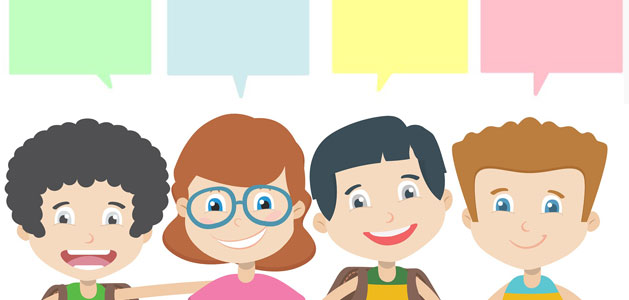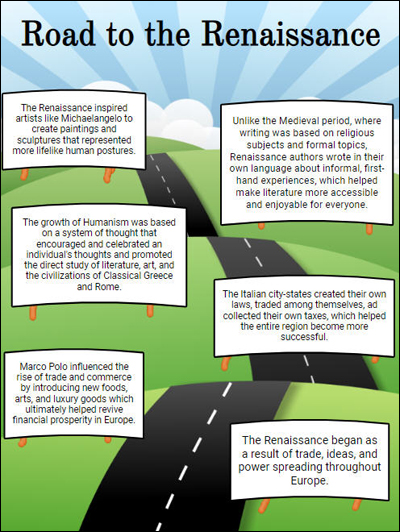

Forbes magazine has defined communication as one of the most important skills in today’s world. Communication today goes way beyond the ability to write text. While writing will always remain an essential skill, modern devices and a global audience means communication can and should be visual and auditory as well.
“We can’t really know anything that we can’t communicate.” Ludwig Wittgenstein
Providing students with opportunities to communicate in different forms prepares them to contribute to today’s connected world. Communication that involves all three cueing systems not only helps us share information more quickly and effectively, research shows that it also helps us retain and comprehend curricular understandings.
Most of us have heard the saying … Choose your words wisely. While essential for social success, being mindful about our words has academic value too. According to research from Marzano’s team, when students take notes and summarize, they “learn to eliminate unnecessary information, substitute some information, keep important information, write/rewrite, and analyze information.”
This does not mean writing down oral ideas verbatim, or copying and pasting text from a digital source, it means putting information into their own words. My son’s recent homework assignment put this idea into action. As students created their own “Road to the Renaissance,” they had to summarize important concepts in one sentence!

Not only did the students have to choose their words wisely, they had to actually place them in a small enough space to create a timeline-like display. So, they really had to think about the “essence” of each topic and make sure they communicated it in as few words and pictures as possible.
A friend of mine has a rule that text messaging should be limited to four back and forth exchanges before you have to pick up the phone and talk. Hearing someone’s voice, how they use their words, their intonation, and their rhythm is so much more telling than using text or images alone; not to mention, most times it is a faster, more effective, and more personal way of communicating.
“Words mean more than what is set down on paper. It takes the human voice to infuse them with deeper meaning.” Maya Angelou
Capturing a student’s voice is one of the most powerful ways to share a student’s learning. If students can record themselves within the context of creating a curriculum project that represents their learning, even better. Krashen suggests that acquisition is, “an unconscious process when language is used for real communication purposes.” Have students communicate their learning in the classroom by recording their voice to:
Digital tools, like Wixie, make it easy for learners to record their voice, listen to it, and then re-record if necessary or desired. According to linguist, Stephen Krashen, it is especially critical with our second language learners, whose “affective filters” may up and thus require a more private and non-threatening space to practice their language development.
Incorporating learning activities that integrate recording the student’s voice is not only motivating for students, but it models for them that their voice is important and matters.
Although the early days of cave paintings, smoke signals, and carrier pigeons have been largely replaced by digital images, text, and voice, the most basic form of communication these days is actually what we started with; symbols. We rely on them so much that phones have built in symbols (emojis) to help us communicate with rapid speed.
You are most likely familiar with the expression “a picture is worth a thousand words,” but did you know that our brains can identify an image shown for a little as 13 milliseconds? And while our short-term memory is the part of our brain that processes words, images are processed by our long-term memory where they get etched in and make a lasting impression.
It’s easy to integrate visuals into your instruction. For example, display an interesting image and ask students to make inferences about it. You could also share two images connected to a topic you are studying and ask students to argue which one would make a better image to represent the concept during a news broadcast.

Be sure to ask students to communicate their ideas and learning with images too. This can be as simple as drawing or pechakucha (more show, less talk) presentation.
Learning sticks better when we can combine these ways of communicating together. As researcher, R, Lehrer (1993,) states, “The process of building a multimedia project, requires learners to transform information into dimensional representations, determine what is important and what is not, segment information into nodes, link the information segments by semantic relationships, and decide how to represent ideas.”
Again, digital tools make this process accessible to the classroom. As they work to build comprehension around new ideas, information, and data, ask students to:
One of the greatest gifts we can give our students is the opportunity for them to share their unique learning with others in ways that matter. So, whether you are having them communicate their learning with their parents, a local business, or with other students at school, make sure to emphasize the importance of their communication. Your student’s words, images, and unique voices are begging to be celebrated!
Krashen, S. (1985). The Input Hypothesis: Issues and Implications. New York: Longman.
Lehrer, R. (1993). Authors of knowledge: Patterns of hypermedia design. In S. P. Lajoie & S. J. Derry (Eds.), Computers as Cognitive Tools (pp. 197-227). Hillsdale, NJ: Lawrence Erlbaum.
Marzano, R. J., Pickering, D. J., & Pollock, J. E. (2001). Classroom instruction that works: Research-based strategies for increasing student achievement. Alexandria, VA: ASCD.
Satell, G. “Why Communication Is Today's Most Important Skill.” Forbes. Feb 6, 2015.

Follow us on Instagram for daily inspiration

Create a thought web, cluster, flowchart, or other graphic organizer for a lesson
8 first projects to get students using technology
Creative, digital book reviews
Fun and powerful ideas with animated characters

Wixie
Share your ideas, imagination, and understanding through writing, art, voice, and video.

Rubric Maker
Create custom rubrics for your classroom.

Pics4Learning
A curated, copyright-friendly image library that is safe and free for education.

Wriddle
Write, record, and illustrate a sentence.

Get creative classroom ideas delivered straight to your inbox once a month.
Topics